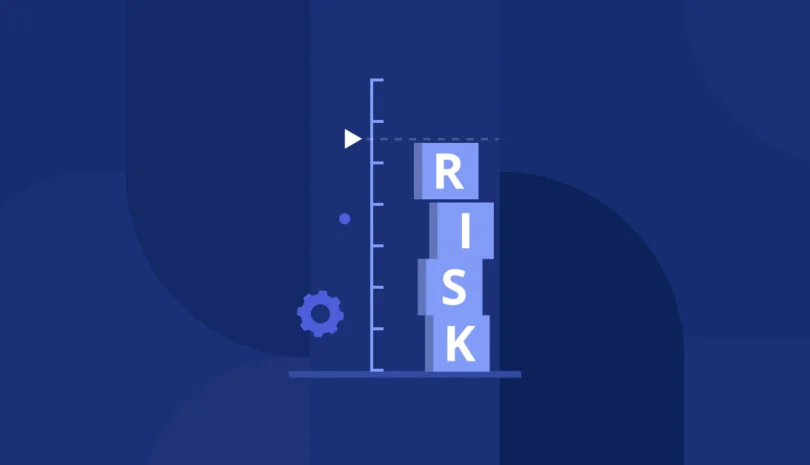You’re rethinking how you oversee third parties. And for good reason. Cyber risk doesn’t sit still anymore, and static checklists can’t keep up with fast-moving threats. That’s where CSRMC in vendor risk management comes in. It pairs continuous monitoring and automation with practical controls you can actually operationalize today.
CSRMC was born in the defense community to speed up decisions and harden systems. It reframes how you identify, measure, and act on risk. For your vendor program, that means less paperwork and more telemetry. Less lag and more signal.
This guide shows you how each CSRMC principle maps to a concrete TPRM control or workflow. You’ll see how to modernize onboarding, monitoring, incident response, and continuous improvement without ripping up what’s already working.
How to Implement CSRMC in Your Vendor Risk Program
CSRMC came out of the Department of Defense to replace slow, checklist-heavy processes with real-time, automated, and threat-informed practices. That design goal translates cleanly to third-party risk. You need faster assurance without drowning your vendors in duplicative questionnaires.
Applying CSRMC in vendor risk management moves you from periodic assessments to living evidence. We’re talking about the kind of real-time insight that comes from telemetry feeds and instant alerts that drive actual outcomes.
This matters now because attackers target your suppliers when they’re the shortest path into your core systems. A framework built on critical controls and continuous visibility gives you a way to see risk sooner and act faster, especially when paired with reciprocity that cuts down on busywork.
This article gives you a step-by-step path to operationalize CSRMC inside your TPRM program. You’ll learn what to map, where automation delivers the biggest wins, and how to get security working smoothly alongside legal and procurement.
Understand the CSRMC Framework
CSRMC organizes risk work across five lifecycle phases. You can adopt them in plain language: Prepare, Prevent, Detect, Respond, and Recover.
- Prepare sets the foundation with vendor tiering, data classification, and baseline control expectations.
- Prevent focuses on secure onboarding and contractual guardrails.
- Detect turns on continuous monitoring and signals from internal and external sources.
- Respond centers on coordinated playbooks with your vendors.
- Recover closes the loop with remediation, lessons learned, and updates to your standards and contracts.
Across these phases sit ten strategic principles you can apply to vendors. Think of them as your operating system for modern TPRM:
- Automation
- Prioritization of critical controls
- Continuous monitoring and dynamic authorization
- DevSecOps practices
- Cyber survivability
- Role-based training
- Enterprise services and control inheritance
- Operationalization of risk data for decision-makers
- Reciprocity and reuse of credible assessments
- Threat-informed cybersecurity testing
The emphasis is on moving from static to dynamic. Your decisions get backed by fresh evidence, not outdated reports.
Perform a Gap Analysis Against CSRMC Requirements
Start by comparing how your program works today with what CSRMC expects. Take inventory of your current processes, from questionnaires and document reviews to control testing and the way you coordinate incidents. Map each step to one of the five CSRMC phases: Prepare, Prevent, Detect, Respond, or Recover. This gives you a clear picture of what’s already working and where the framework adds real value.
Next, assess the balance between manual and automated work. Look for handoffs that still depend on email chains or spreadsheet updates, plus the calendar reminders everyone ignores until it’s too late. Identify places where you’re re-asking vendors for information you could inherit or reuse. Finally, evaluate outcome measures like:
- Time to onboard a critical vendor
- Time to detect posture changes
- Time to close critical findings
- How often risk scores update
These metrics will show you where automation and monitoring will have the biggest impact.
Map CSRMC to Your Vendor Risk Workflow
Map the five CSRMC phases to your existing lifecycle so improvements fit how work already gets done. During vendor onboarding, emphasize Prepare and Prevent. Align your tiering logic and data flows with the control baselines you’re writing into contracts and procurement templates. Add pre-approved clauses that lock in expectations around incident reporting and the evidence cadence both sides will follow. When those terms are crystal clear before work begins, everyone moves faster.
In business-as-usual monitoring, focus on Detect and Respond. Turn on continuous monitoring for your critical tiers. Feed alerts into your ITSM or case management system so the right owners see them. Use standard playbooks with vendors for suspected incidents, credential leaks, or high-severity vulnerabilities that hit shared tech stacks.
For remediation and lessons learned, lean into Recover. Track corrective actions to closure and close the loop with updated questionnaires or tighter control baselines that reflect what you’ve learned.
Assign responsibilities across stakeholders to keep speed without losing accountability:
- Security: Control strategy and monitoring
- Procurement: Contract hooks and vendor communications
- Legal: Notification and liability terms
- Business owner: Validating residual risk and go/no-go decisions
Implement CSRMC-Aligned Capabilities into Your Current TPRM Workflow
With your map in hand, you can add capabilities that bring CSRMC to life. Start where the data already exists and connect the dots. Automation removes rework. Monitoring keeps risk scores fresh. Dashboards put the right signal in front of decision-makers when it matters most. The following practices show you how to turn CSRMC tenets into repeatable motions inside TPRM.
Automate Core Risk Workflows
Automation reduces friction for vendors and gives your team time back for real risk decisions. Start with the steps that trigger the most delays:
- Use continuous monitoring tools to collect external signals on exposed services, expired certificates, leaked credentials, and exploitable vulnerabilities on a daily cadence. Tie findings to vendor records automatically.
- Adopt auto-scoring so responses, evidence, and monitoring signals roll up into a dynamic vendor risk score that updates without manual recalculation.
- Automate questionnaires with conditional logic, skip patterns, and evidence reuse. Pre-populate answers from prior cycles or accepted certifications to cut time-to-complete.
- Route tasks by policy using rules that escalate based on tier, data sensitivity, or control gaps. Your team can focus on exceptions, not the happy path.
Focus on Critical Controls
CSRMC prioritizes the controls that change outcomes. Translate that into a vendor baseline that’s both clear and adaptable:
- Define a baseline set for all vendors that covers identity, vulnerability management, logging, backup and recovery, and secure configuration. Keep it small and outcome-focused.
- Tailor by criticality using tiers. For high-impact vendors, require stronger evidence like recent penetration test summaries, recovery time objectives, and privileged access reviews.
- Make it measurable with SLAs that include patching critical vulnerabilities within agreed timelines, enabling multi-factor authentication for administrative access, and maintaining tested restoration procedures.
- Review annually so your baseline tracks new threats and lessons learned from incidents.
Enable Real-Time Visibility
Leaders need live signal, not quarterly slides. Build visibility that shows what matters and prompts timely action:
- Create role-based dashboards for executives, risk owners, and analysts. Show vendor tiers, open critical findings, exposure trends, and time to remediate.
- Set automated alerts for posture changes like external rating drops, credential leaks, expired certificates, or a disclosed breach tied to the vendor’s tech stack.
- Integrate with ticketing so alerts open cases by policy with the right severity and due dates. Close the loop when evidence confirms a fix or a false positive.
- Track outcomes like mean time to detect and mean time to remediate. These metrics confirm whether visibility is driving action.
Leverage Shared Assessments & Reciprocity
Reciprocity trims duplication without lowering the bar. The goal is to reuse credible assurance so you can spend time on real gaps:
- Adopt standardized templates like SIG or CAIQ to reduce custom question sets and improve vendor response quality.
- Accept existing certifications when scope and recency fit your risk. Think SOC 2 Type II reports for the services you actually use, or ISO certification when the controls overlap with your baseline.
- Document inheritance so vendors building on approved cloud platforms can reference shared controls rather than re-prove them.
- Verify and spot-check with targeted evidence requests or test results where the risk surface is unique to your use case.
Incorporate Threat Intelligence
Threat-informed oversight keeps assessments current as tactics change. Bring live threat data into vendor decisions and require vendors to act on it:
- Integrate threat feeds and map vendor technologies to emerging vulnerabilities and TTPs. Flag likely exposure early.
- Require impact checks when a new high-severity CVE or exploit campaign hits a vendor’s stack. Ask them to share where they stand, what they’ve mitigated, and when the fix lands.
- Align to ATT&CK for shared language in tabletop exercises and incident playbooks. It keeps both sides focused on behaviors, not headlines.
- Capture lessons learned from real events and fold them into your baseline, contracts, and monitoring rules.
Overcoming Common Challenges with Incorporating CSRMC with Vendor Risk
Moving to continuous assessments isn’t just about flipping a switch on new technology. It’s change management. Your internal teams need training on the new tools and the fresh signals flowing into playbooks they’ve never seen before. Done right, the program should feel lighter, not heavier. Short enablement sessions tied to actual vendor cases help the shift stick.
Now, let’s talk about vendor pushback. You’ll get it, especially if your requests feel duplicative. This is where reciprocity and inheritance become your best friends. Explain what you’ll accept up front. Share your baseline and timelines before contract signature so there are no surprises. When vendors know the rules of the game early, friction drops.
Tool integration also matters. A lot. Connect your monitoring platform to your questionnaires, then link those to procurement systems and your broader GRC stack using APIs that keep data flowing without someone copying and pasting all day. The result? A program that reacts in hours, not weeks.
Panorays helps you strengthen third-party oversight by making assessments adaptable to each unique vendor relationship. It surfaces actionable remediations that keep pace with change. Complex supply chains trust Panorays to stay ahead of emerging risks while reducing friction for vendors.
Looking for a practical way to operationalize CSRMC with less manual effort and clearer decision-making? Book a personalized demo with Panorays to see how an AI-powered platform can help you optimize defenses across your vendor ecosystem.
FAQs: CSRMC Framework and Vendor Risk Programs
-
Cybersecurity Risk Management Construct. It’s a defense-origin framework built around automation and continuous monitoring, with reciprocity and critical controls woven through every phase of a five-stage lifecycle.
-
You map the five phases (Prepare, Prevent, Detect, Respond, and Recover) to your vendor lifecycle. Automate questionnaires. Reuse credible assessments. Turn on continuous monitoring for critical tiers. Run joint playbooks with vendors for incidents. Evidence flows into dynamic risk scores and dashboards so you can act quickly.
-
NIST CSF and ISO 27001 give you widely adopted structures for controls and management systems. CSRMC’s distinction? Its operational posture leans into live telemetry and rapid response cycles that traditional frameworks don’t emphasize as heavily. In practice, many programs combine them. Use ISO or NIST to define your control set. Use CSRMC to drive how those controls are monitored and acted on in near real time.



